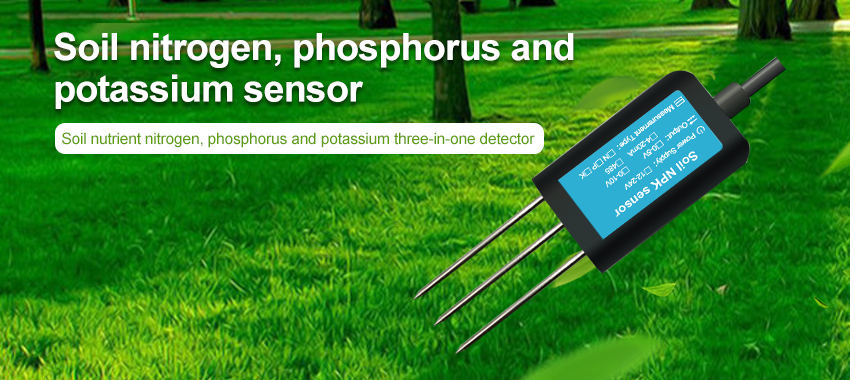Precision farming, also known as precision agriculture, has revolutionized the agricultural industry by integrating advanced technologies to optimize crop production. One crucial component of precision farming is the use of soil sensors, which provide real-time data on soil conditions. This article explores the significant impact of soil sensors on precision farming, focusing on how they enhance efficiency and improve yields for sustainable agricultural practices.

The Importance of Soil Health in Precision Farming:
Soil health plays a vital role in crop growth and overall farm productivity. Factors such as soil composition, moisture content, nutrient availability, and pH levels profoundly influence plant health and yield potential. Monitoring and managing these soil parameters are essential for optimizing crop growth and resource utilization.
Soil Sensors in Precision Farming:
2.1. Types of Soil Sensors: Soil sensors encompass various types, including moisture sensors, nutrient sensors, temperature sensors, and pH sensors. Each sensor type measures a specific parameter critical for crop growth and provides valuable data to inform precision farming practices.
2.2. Real-time Data Collection: Soil sensors are designed to collect real-time data on soil conditions. They can be installed at different depths within the soil profile, enabling monitoring of both surface and subsurface conditions. This real-time data empowers farmers to make timely adjustments and optimize irrigation, fertilization, pest management, and other agronomic practices.
2.3. Wireless Connectivity: Many soil sensors are equipped with wireless connectivity capabilities, ensuring seamless data transmission to a central system or farm management software. This connectivity allows farmers to remotely access and analyze soil data, making it easier to monitor and manage large agricultural landscapes efficiently.
Benefits of Soil Sensors in Improving Efficiency and Yields:
3.1. Precise Resource Management: Soil sensors enable precise resource management by providing accurate and localized information about soil moisture levels. With this information, farmers can optimize irrigation practices, ensuring crops receive the right amount of water at the right time. This prevents overwatering and underwatering, reducing water waste, energy consumption, and associated costs.
3.2. Nutrient Optimization: Soil sensors measure nutrient levels in the soil, allowing farmers to apply fertilizers precisely where and when they are needed. This targeted approach optimizes nutrient uptake by plants, minimizes fertilizer runoff, and reduces environmental pollution. Consequently, farmers can achieve better nutrient utilization efficiency and reduce expenditure on unnecessary fertilizers.
3.3. pH Balance Monitoring: Soil sensors that measure soil pH help farmers monitor and adjust soil acidity or alkalinity. Maintaining the appropriate pH level is crucial for nutrient availability and uptake by plants. By optimizing pH balance, farmers create ideal conditions for crop growth and maximize productivity.
3.4. Precise Pest and Disease Management: Soil sensors can also assist in pest and disease management. By monitoring soil conditions, such as moisture and temperature, farmers can predict and prevent potential pest infestations or disease outbreaks. This allows for targeted interventions, reducing reliance on chemical pesticides and minimizing environmental impacts.
3.5. Data-driven Decision Making: Soil sensors provide continuous monitoring, generating valuable data on crop growth patterns, soil trends, and specific field conditions. This data-driven decision-making approach helps optimize resource allocation, crop rotation strategies, and overall farm management practices. Farmers can make informed choices based on accurate and timely data, leading to improved yields and profitability.

Integration with Other Precision Farming Technologies:
Soil sensors can be integrated with other precision farming technologies to create a holistic and efficient farming system. Integration with weather stations, satellite imagery, and crop management software enhances the effectiveness of soil sensor data, providing farmers with comprehensive insights into their fields. This integration enables precise and proactive decision making, facilitating optimal resource allocation and sustainable farming practices.
Challenges and Future Directions:
While soil sensors offer significant benefits for precision farming, there are challenges that need to be addressed. These challenges include sensor accuracy and calibration, data interpretation, cost-effectiveness, and scalability for large-scale farming operations. Future developments should focus on standardizing data collection protocols, developing user-friendly interfaces and analytics tools, and reducing sensor costs to make them accessible to farmers of all scales.
